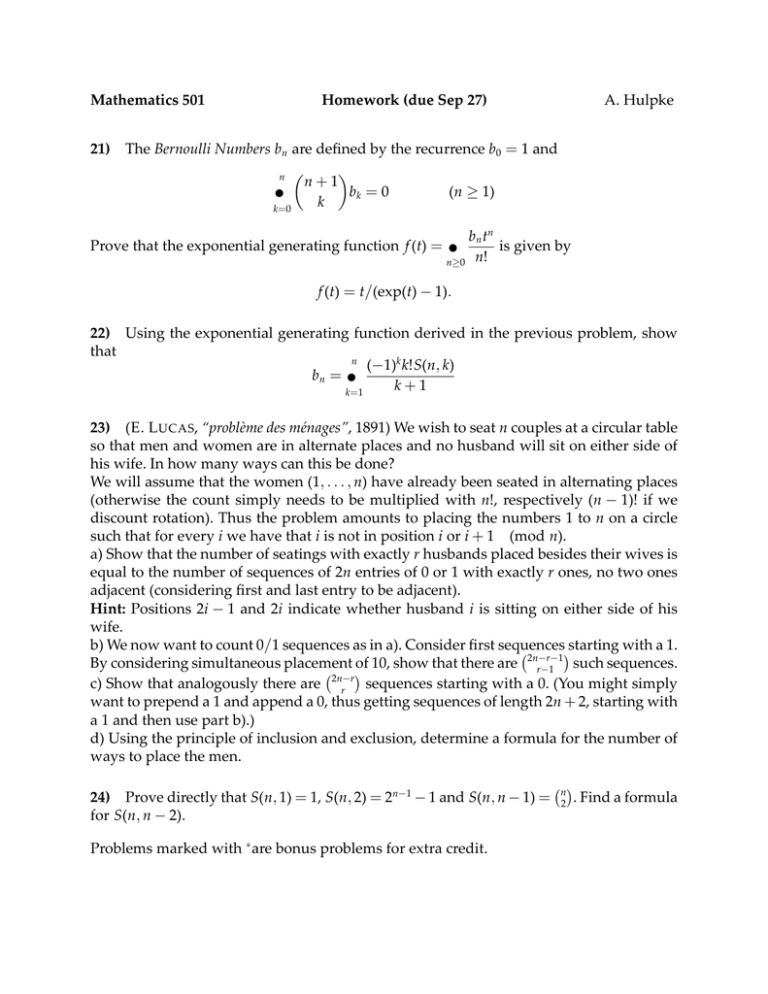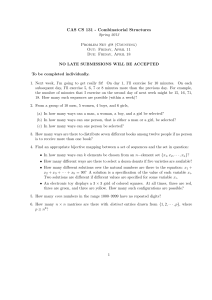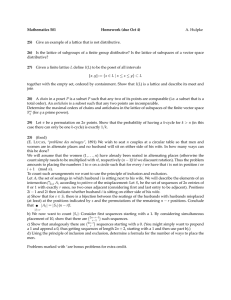∑ = + ≥
advertisement

Mathematics 501 A. Hulpke Homework (due Sep 27) 21) The Bernoulli Numbers bn are defined by the recurrence b0 = 1 and n n+1 (n ≥ 1) ∑ k bk = 0 k=0 bn tn is given by Prove that the exponential generating function f (t) = ∑ n≥0 n! f (t) = t/(exp(t) − 1). 22) Using the exponential generating function derived in the previous problem, show that n (−1)k k!S(n, k) bn = ∑ k+1 k=1 23) (E. L UCAS, “problème des ménages”, 1891) We wish to seat n couples at a circular table so that men and women are in alternate places and no husband will sit on either side of his wife. In how many ways can this be done? We will assume that the women (1, . . . , n) have already been seated in alternating places (otherwise the count simply needs to be multiplied with n!, respectively (n − 1)! if we discount rotation). Thus the problem amounts to placing the numbers 1 to n on a circle such that for every i we have that i is not in position i or i + 1 (mod n). a) Show that the number of seatings with exactly r husbands placed besides their wives is equal to the number of sequences of 2n entries of 0 or 1 with exactly r ones, no two ones adjacent (considering first and last entry to be adjacent). Hint: Positions 2i − 1 and 2i indicate whether husband i is sitting on either side of his wife. b) We now want to count 0/1 sequences as in a). Consider first sequencesstarting with a 1. By considering simultaneous placement of 10, show that there are 2nr−−r1−1 such sequences. c) Show that analogously there are 2nr−r sequences starting with a 0. (You might simply want to prepend a 1 and append a 0, thus getting sequences of length 2n + 2, starting with a 1 and then use part b).) d) Using the principle of inclusion and exclusion, determine a formula for the number of ways to place the men. 24) Prove directly that S(n, 1) = 1, S(n, 2) = 2n−1 − 1 and S(n, n − 1) = for S(n, n − 2). Problems marked with ∗ are bonus problems for extra credit. n 2 . Find a formula








